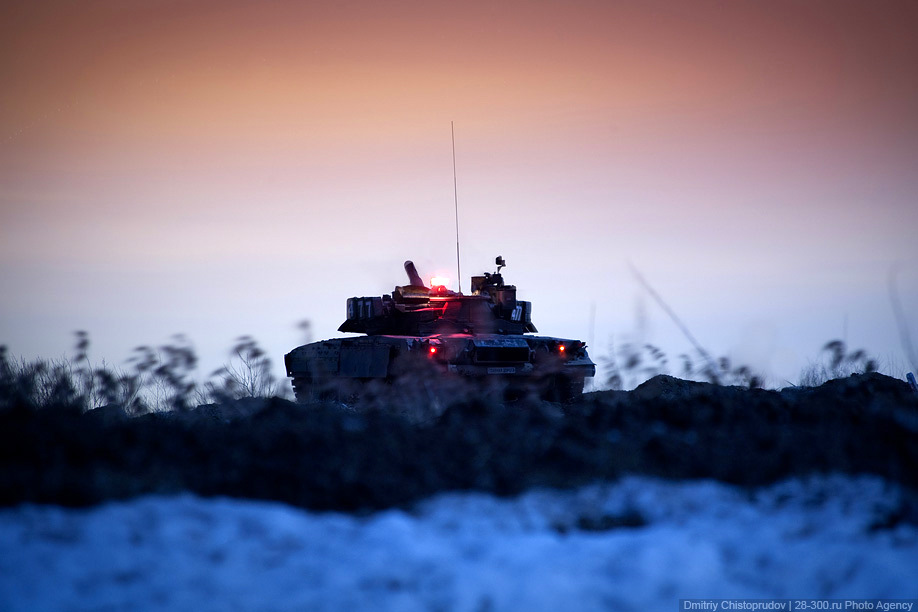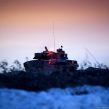
Kondratyev, Network-Centric Warfare and the Race Against Time (Part One)
Publication: Eurasia Daily Monitor Volume: 10 Issue: 31
By:

Colonel-General Valery Gerasimov, the chief of the General Staff, recently addressed a military security conference in Moscow organized jointly by the relevant committees in the Duma and Federation Council with support from the project “Science XXI Research on the Promotion of Security.” Not surprisingly, Gerasimov stated that Moscow’s highest priority in the near future will remain the strategic nuclear forces. However, Gerasimov reminded his audience that modern warfare is increasingly moving from air, land and sea, into space and the information spheres; and consequently, Russia is pursuing its own network-centric warfare capabilities marked by a transition from vertical to global networked automation systems (Krasnaya Zvezda, February 14).
Similarly, on February 15, Colonel-General Vladimir Chirkin, the commander-in-chief of the Ground Forces, used a visit to the St. Petersburg research laboratories and production facilities of the Russian marine and aviation technology company “Transas” to reinforce the message that Moscow has long-term interests in developing and procuring “command, control, communications, computers, intelligence, surveillance and reconnaissance” (C4ISR) assets (Nezavisimoye Voyennoye Obozreniye, February 15). The success of such modernization efforts will depend upon the condition of the domestic defense industry, which is not without its critics. Major-General Vladimir Dvorkin (retired) has openly questioned statements of aspiration by Russian politicians concerning attempts to reinvigorate the Russian economy on the back of the defense industry (https://www.ng.ru/nvo/2013-02-15/3_kartblansh.html).
Despite the evident myriad of problems within the “new look” reform of the Armed Forces, including key elements either quietly being abandoned or subject to inconclusive experimentation, the top brass believes that the underlying drive toward network-centric capabilities remains on course. The move from a platform-centric to a network-centric basis for the Armed Forces was the real engine of development in the “new look,” but with much of that reform lying in tatters the question is why the top brass still believes C4ISR is the way forward. How are these views developed and, more importantly, what do leading Russian military officers understand by the concept “network-centric warfare?” The answers to these questions lie in the emphasis and levels of intellectual sophistication as well as analytical skills among influential Russian writers on the themes linked to network-centric capabilities. For example, some Russian analysts have argued that the country is well on its way to developing its own network-centric doctrine, rooted in re-applying the concept of reconnaissance-strike systems (Voyenno Promyshlennyy Kuryer, September 26, 2012).
Some of the clarifications and clues in addressing these complex issues lie in the writings of Lieutenant-Colonel Aleksandr Kondratyev, professor and candidate of military sciences at the Academy of Military Sciences, whose prolific work on network-centric warfare includes thorough analyses of such advances within the United States, other North Atlantic Treaty Organization (NATO) militaries and early efforts by the Chinese People’s Liberation Army to develop their own versions of network-centric capabilities. In an article in October 2011, Kondratyev returned to an earlier theme in his work, addressing what the concept of network-centric war means among its leading practitioners. In this article on the “network-centric front,” Kondratyev addresses the theme of combat in a single information space. The author explains the importance of C4ISR, tracing the evolution of network-centric thinking in the US military, with additional reference to other militaries, before stating that the concept cannot be confused with existing Russian approaches such as “reconnaissance-strike systems” (https://www.oborona.ru/includes/periodics/maintheme/2011/0210/21125558/detail.shtml).
He then notes Russia’s backwardness in microelectronics, or communications systems, arguing it will be a long and difficult transition for the Russian Armed Forces as they enter the information era. But Kondratyev argues that it is vital for Russian policymakers to understand the concept of “network-centric” prior to embarking on very costly arms programs. Kondratyev notes that the whole phenomenon of “network-centric” approaches to combat goes way beyond simply the means of command and control; it is about the execution of the set tasks. The author advances the view that the concept, if properly understood and applied in Russia, could increase the combat potential of the military, facilitate the conduct of operations—enhancing the combat capabilities of the formations in the “new look”—as well as achieve “economic efficiency.” Perhaps even more importantly, Kondratyev reminds his readers that the adoption of network-centric models will not offer a panacea to the Russian Armed Forces, and recognizes that there are risks along the path to informationizing the force structures. He concludes that more is required to develop advanced algorithms to use in solving problems in combat missions, integrating the network and, finally, understanding what is needed in this process and why. Lastly, Kondratyev recommends conducting an audit of all existing and planned deployments of computer networks in the Armed Forces in order to avoid wasteful defense spending (https://www.oborona.ru/includes/periodics/maintheme/2011/0210/21125558/detail.shtml).
By September 2012, this new theme of a cost-effective adoption of network-centric capabilities as part of the process of military modernization was couched in terms of placing the concept within its context, tracing its evolution from Marshal Nikolai Ogarkov’s Revolution in Military Affairs (RMA), and how the RMA was used by the Pentagon to further the network-centric approach in the US military. Kondratyev noted a system failure during a US-South Korea military exercise in August 2011, but avoided casting this as a “tragedy,” instead presenting it as an opportunity for participants to learn and move on. Turning to the Russian Armed Forces, Kondratyev demonstrates awareness that the concept has its critics in both the US and in Russia. He is clear, however, that Russia is still at the beginning of this developmental path. This will compel the introduction of new computer hardware and software, applying the concept in the information space, and building the tools needed to support automating the command processes (Nezavisimoye Voyennoye Obozreniye, September 7, 2012).
Kondratyev sees Russia as playing “catch-up” with the leading advanced militaries in this area, but understands there is no real alternative. Network-centric capabilities must be pursued, and he offers this as a cost-effective force multiplier necessary for the Russian military. He advocates clarification and agreement on the precise meaning of the concept along with the creation of a terminology database. He further recommends working on the application of network-centric principles to force structure and training, information analysis, producing concept papers for the military, transitioning to an electronic document management system and promoting information tools in the Armed Forces. This will compel close interaction between the defense ministry, defense industry and research organizations in this venture, as well as induce the formation of working groups to promote its understanding and introduction (Nezavisimoye Voyennoye Obozreniye, September 7, 2012).




